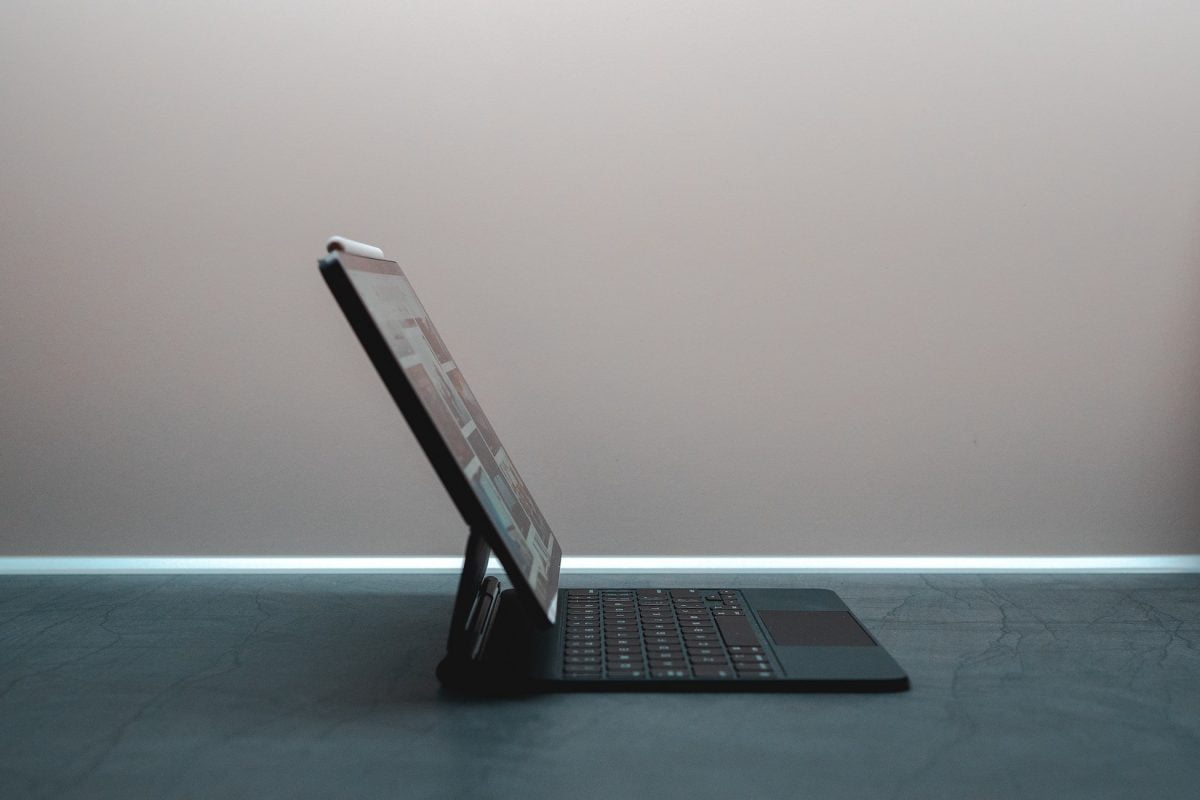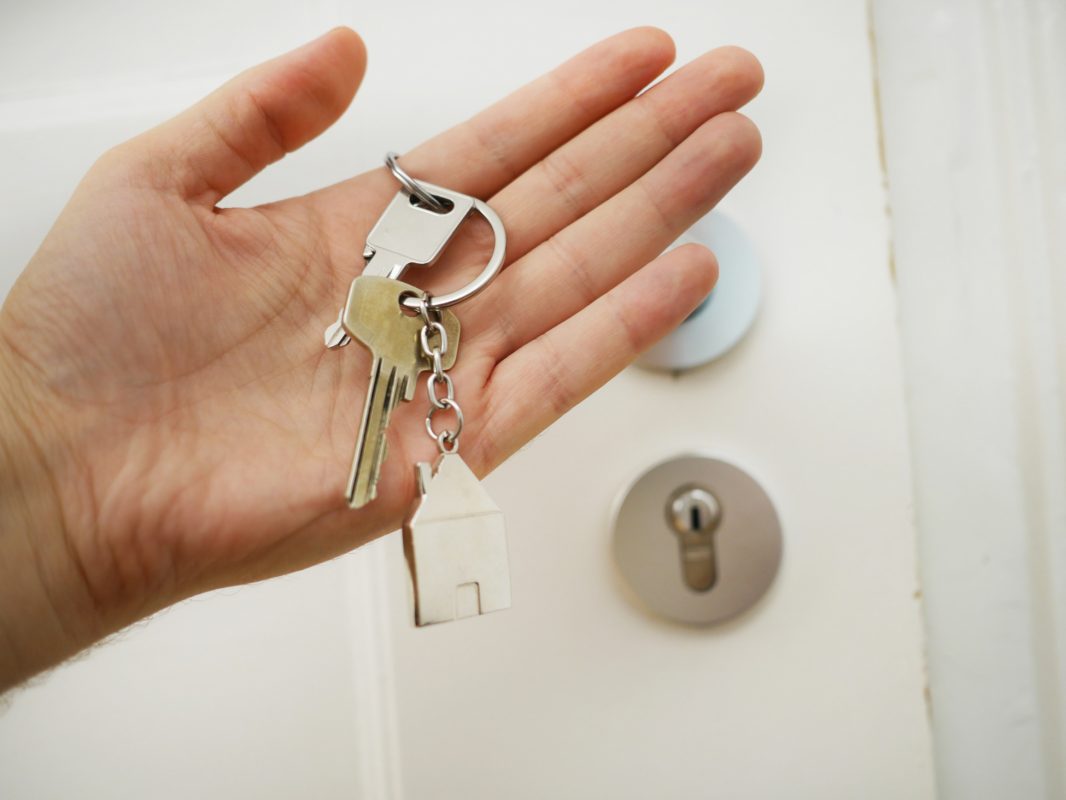Picture this: you’re on the brink of a major financial move, juggling dreams of a new home or a strategic renovation while wondering which financing weapon—Bridge Loan or HELOC—will serve you best. Welcome to your ultimate guide on Bridge Loan vs HELOC, where we break down these two popular financing options using plain language, a dash of humor, and plenty of relatable insights for millennials and Gen Zers who are all about making smarter, more informed financial choices.
Bridge Loan Vs HELOC Table of Contents
The Financial Tug-of-War: Bridge Loan vs HELOC
Bridge Loans Demystified: Bridging the Gap to Your Dreams
HELOC Unveiled: Your Home Equity’s Secret Weapon
Bridge Loan vs HELOC: The Ultimate Comparison
Who Should Consider a Bridge Loan?
The Pros and Cons: Weighing Your Financing Options
Real-World Scenarios: Which Option Will Save the Day?
How to Choose the Right Financing Strategy for Your Life
Expert Tips to Avoid Financial Pitfalls
Resources and Community Support: Your Next Steps
Real-Life Success Stories: Empowering Financial Journeys
Understanding the Risks and Managing Them Like a Pro
Your Journey to Financial Empowerment: Embrace the Future
Integrative HELOC and Bridge Loan FAQs: Your Questions Answered
The Financial Tug-of-War: Bridge Loan vs HELOC
If you’re standing at the crossroads of modern financial planning, you’re likely asking: “What on earth is a Bridge Loan, and how does it differ from a HELOC?” Whether you’re eyeing that dream property waiting in the wings or contemplating a home makeover, the right financing tool can give you the upper hand. In this guide, we’ll dive deep into the nitty-gritty of Bridge Loans and Home Equity Lines of Credit (HELOCs), helping you unravel the mystery behind these financing options and decide which option aligns with your financial game plan.
While both Bridge Loans and HELOCs can provide essential liquidity when you need it most, they’re not created equal. Each one caters to different needs and comes with a unique blend of perks, pitfalls, terms, and conditions. So, buckle up, because we’re about to take a financial rollercoaster through the world of short-term vs long-term borrowing.
Bridge Loans Demystified: Bridging the Gap to Your Dreams
Imagine you’re standing in front of a massive chasm that separates you from your dream home or your next big renovation idea. A Bridge Loan is like that temporary suspension bridge that helps you cross over to the other side while you wait for your permanent financing solution to kick in. It’s all about short-term relief—a quick-fix financing option that gets you through a transitional period.
What Is a Bridge Loan?
At its core, a Bridge Loan is a short-term loan intended to ‘bridge’ the gap between the purchase of a new property and the sale of an existing one. This type of financing is particularly handy when you need funds immediately but are still in the process of securing long-term financing or waiting for a property to sell.
The typical duration of a Bridge Loan can range from a few months to about one year. It’s primarily used by homebuyers or real estate investors who need to act quickly, such as when bidding on a hot property or handling urgent home renovations. Since bridge loans fill that financial gap, they are usually structured with a higher interest rate than traditional long-term loans.
How Bridge Loans Work
When you secure a Bridge Loan, you’re borrowing against the value of your existing property or collateral. Lenders focus on the equity you have in your current home or other assets, making this type of loan somewhat accessible even if your credit isn’t perfect. The loan usually requires only interest payments until the longer-term financing or sale of your property comes through.
Here’s a quick breakdown of the process:
- Short-Term Funding: Bridge Loans are designed for urgent, short-term financing needs, giving you access to capital quickly.
- Higher Rates: Expect to pay a higher interest rate compared to your regular mortgage since you’re taking on a temporary loan.
- Repayment Trigger: The loan is typically repaid once your long-term financing is in place or when you sell your property.
- Simplified Approval Process: Lenders often focus heavily on the value of your existing assets rather than your current income, making approval somewhat easier for those in transition.
In essence, a Bridge Loan is your financial safety net when you need to make a leap of faith in the real estate market.
HELOC Unveiled: Your Home Equity’s Secret Weapon
Now, let’s talk about the HELOC—a Home Equity Line of Credit. Think of it as a credit card, but instead of swiping plastic, you’re tapping into the equity built up in your home. It’s like having a secret weapon hidden away for those moments when cash flow is a bit tight or you need to invest in that passion project.
What Is a HELOC?
A HELOC is a revolving credit line secured by your home’s equity. Unlike a Bridge Loan, this option gives you a flexible, on-demand source of funds that you can use whenever you need it during the draw period (typically 5 to 10 years). You only pay interest on the amount you actually draw, making it a versatile and often more cost-effective option for ongoing financial obligations or home improvement projects.
How HELOCs Work
Here’s the lowdown on HELOCs:
- Revolving Credit: Once approved, you can draw funds as you need them, up to a predetermined limit.
- Variable Interest Rates: Interest rates on HELOCs tend to be variable, meaning they can fluctuate over time in line with market trends. This is something to keep an eye on if you’re budgeting for long-term projects.
- Repayment Terms: During the draw period, you might only be required to pay interest. Later, a repayment period kicks in, often with higher monthly payments as you start repaying both principal and interest.
- Flexibility: HELOCs aren’t just for emergencies—they’re excellent for consolidating debt, funding renovations, or covering education costs, among other things.
For homeowners, a HELOC turns the locked-up equity in your property into liquid cash, allowing you to seize opportunities or manage unexpected expenses without the hassle of reapplying for new financing every time.
Bridge Loan vs HELOC: The Ultimate Comparison
When it comes to making a sound financial decision, understanding the key differences between a Bridge Loan and a HELOC is crucial. They’re not interchangeable, but each can be the perfect fit depending on your specific circumstances.
Term Length
Bridge Loans are inherently designed for short-term situations—think of them as financial sprinters, built to cover temporary cash flow gaps for up to a year. On the other hand, HELOCs offer a longer draw period, usually lasting 5 to 10 years, giving you a revolving credit line that can accommodate longer-term or recurring needs.
Interest Rates and Fees
It’s no secret that Bridge Loans come with higher interest rates due to their short-term, high-risk nature. You’re essentially paying a premium for rapid access to funds. HELOCs, however, typically offer lower interest rates, especially when market conditions are favorable. That said, HELOC interest rates are variable, which means they can adjust over time. Plus, there might be maintenance fees, annual fees, or even closing costs associated with HELOCs.
Repayment Flexibility
Here’s where the rubber meets the road: Bridge Loans usually require interest-only payments until your long-term financing solution comes into play, at which point you pay off the principal. HELOCs offer more flexibility; during the draw period, you might only pay interest, but eventually, you must start repaying both interest and principal, similar to a standard loan.
How You Access the Funds
With a Bridge Loan, you receive a lump sum quickly, making it ideal when you need immediate cash to secure a property or cover a renovation cost. In contrast, a HELOC functions like a credit card: you have a credit limit, and you can draw funds as needed. This difference can greatly impact your budgeting and cash flow management strategies.
What’s the Best Fit for You?
The decision ultimately comes down to your financial situation and needs. If you’re in a transitional period—say, selling your current home while purchasing a new one—a Bridge Loan might be the perfect short-term fix. But if you’re looking for an ongoing source of flexible funds to tap into as opportunities arise, a HELOC could be your ideal financial tool.
Who Should Consider a Bridge Loan?
Bridge Loans aren’t for everyone—they’re designed for those who are in a bit of a hurry or have a specific short-term goal. Here are a few scenarios where a Bridge Loan might be the right choice:
- Homebuyers in a Tight Spot: If you’ve found your dream home but haven’t yet sold your current property, a Bridge Loan can cover the down payment or closing costs while you wait for your house to hit the market.
- Renovation Projects: Planning a time-sensitive home renovation? A Bridge Loan might offer the capital needed to quickly fund projects that could boost your property’s value.
- Real Estate Investors: Investors often use Bridge Loans to snap up properties in competitive markets where fast action is the name of the game, only to refinance later with more favorable long-term lending options.
The key advantage of a Bridge Loan is speed. If your financial scenario demands quick liquidity and you’re confident that a long-term solution is on the horizon, this option can be a strategic move despite the higher interest premiums.
Who Should Consider a HELOC?
HELOCs are a fantastic option for homeowners who have built up significant equity and want a reliable, flexible financial safety net. Here’s when a HELOC might come in handy:
- Budgeting for Home Improvements: If you’re planning on making improvements over time, like updating your kitchen or landscaping your yard, a HELOC gives you access to funds as the work progresses.
- Debt Consolidation: Rather than juggling multiple high-interest debts, many savvy homeowners use a HELOC to consolidate and pay off existing loans—often at a lower rate.
- Emergency Fund: Although it’s generally best to have cash savings on hand, having a HELOC can serve as an extra cushion in case of unexpected expenses.
- Flexible Financing: For those who need funds sporadically over several years, a HELOC’s revolving nature is a perfect match.
The appeal of a HELOC lies in its ability to turn the value of your home into a liquid asset without tapping into messy refinancing processes every time you need extra cash.
The Pros and Cons: Weighing Your Financing Options
No financial tool is without its quirks. Let’s break down the advantages and potential pitfalls of both Bridge Loans and HELOCs to help you decide which suits your lifestyle and financial goals.
Bridge Loans – The Quick Fix
Pros:
- Rapid access to cash, often within days.
- Ideal for time-sensitive transactions like home purchases or urgent renovations.
- Simplified qualifying process, leveraging the equity in your existing property.
Cons:
- Higher interest rates compared to long-term financing options.
- Short repayment term may lead to pressure if long-term financing fails to materialize quickly.
- Generally comes with higher fees and closing costs.
HELOCs – The Flexible Workhorse
Pros:
- Ongoing, flexible access to funds without the need for repeated loan applications.
- Typically lower interest rates than Bridge Loans, especially during the draw period.
- Pay interest only on the amount drawn, offering cost efficiency when budgeting expenses.
- Great for long-term projects, home improvements, or as a financial safety net.
Cons:
- Variable interest rates can fluctuate with market changes, impacting monthly payments.
- Requires sufficient home equity, which might be a barrier for newer homeowners.
- The draw period eventually ends, after which your repayments will increase significantly.
Real-World Scenarios: Which Option Will Save the Day?
To cement the concepts, let’s explore some real-world scenarios where choosing between a Bridge Loan and a HELOC could make a world of difference.
The Fast-Paced Home Purchase
Meet Alex, a millennial with a keen eye for real estate. Alex stumbles upon a charming home that’s likely to be snapped up quickly. The catch? Alex’s current home hasn’t hit the market yet. In this case, a Bridge Loan is the perfect sidekick—providing the necessary funds for a down payment and closing costs while Alex gears up to sell the current residence. Despite the higher interest rate, the temporary nature of the loan means it’s a small price to pay for seizing a dream property.
The Endless Home Renovator
Then there’s Jamie, a Gen Z homeowner who loves DIY projects and frequent home improvements. Instead of taking out a new loan each time a creative idea strikes, Jamie opts for a HELOC. With its flexible access to funds, Jamie’s able to pay for kitchen upgrades one month and revamp the backyard the next—without the hassle of continually reapplying for financing. The variable interest rate means careful budgeting is required, but the convenience and ongoing access to cash make it a winning choice.
The Investment Guru
Consider Sam, a savvy investor juggling multiple properties. Sam needs rapid funding to secure a limited-time investment opportunity. A Bridge Loan offers the swift cash injection required, allowing Sam to capitalize on the deal before it evaporates. Once the property is sold or refinanced, the Bridge Loan is paid off, leaving Sam free to hunt for the next lucrative opportunity.
How to Choose the Right Financing Strategy for Your Life
Deciding between a Bridge Loan and a HELOC isn’t as black and white as flipping a switch. It’s more like choosing a playlist to match your vibe—different tunes for different moods and situations.
Here are some expert tips to help you choose:
- Assess Your Timeline: If you need quick cash for a short-term project or a fast-moving home purchase, a Bridge Loan might be your best bet. If you’re looking for an ongoing source of funds, lean toward a HELOC.
- Analyze Your Financial Health: Evaluate your current home equity and your debt-to-income ratio to determine which option you’re likely to qualify for. A strong credit profile might open up more HELOC options, whereas a Bridge Loan may focus more on collateral.
- Consider Your Future Plans: Are you planning on making multiple reinvestments in your property or using the funds for different projects over time? A HELOC offers flexibility, unlike the one-shot nature of a Bridge Loan.
- Understand the Costs: Factor in interest rates, fees, and repayment terms. While Bridge Loans tend to be more expensive due to their short-term, high-convenience nature, HELOCs require attention to variable rates over time.
Ultimately, it boils down to aligning the financing option with your goals and cash flow needs. Being well-informed is your best asset in making a decision that safeguards your financial well-being.
Expert Tips to Avoid Financial Pitfalls
In the financial jungle, even the most promising tool can become a trap if used the wrong way. Here are some tips to ensure that whether you choose a Bridge Loan or a HELOC, you stay on the safe side:
- Budget Wisely: Always leave room for potential rate increases if you opt for a HELOC. A realistic budget can prevent surprises down the road.
- Plan Your Exit Strategy: With Bridge Loans, knowing exactly when the permanent financing or property sale will occur is vital. Have a clear plan for repayment to avoid any last-minute financial scrambles.
- Consult the Experts: Talk to a financial advisor or mortgage specialist before committing to either option. Sometimes a professional viewpoint can help you uncover hidden fees or alternative solutions you hadn’t considered.
- Keep an Eye on Market Trends: Variable interest rates in HELOCs can shift with market conditions. Stay updated on financial trends to make informed decisions about when to draw funds or refinance.
- Review the Fine Print: Both types of loans come with terms that can contain surprises. Read all documents carefully and ask questions to ensure you fully understand the repayment obligations, fees, and potential penalties.
By arming yourself with these tips, you not only avoid common pitfalls but also position yourself to leverage whichever financial tool you select to its fullest potential.
Resources and Community Support: Your Next Steps
Facing a significant financial decision can be overwhelming, but remember, you’re not alone in this journey. There’s a wealth of resources available, online communities to join, and experts ready to lend a hand. Here are some smart next steps to empower your decision-making:
- Review Financial Blogs and Podcasts: Engage with content from trusted personal finance influencers who break down complex financial topics in relatable terms.
- Join Online Forums: Platforms like Reddit’s r/personalfinance or dedicated Facebook groups offer insights and real-world advice from people who’ve navigated Bridge Loans and HELOCs.
- Attend Webinars and Workshops: Many financial institutions and independent experts offer free or low-cost webinars; these sessions can upgrade your financial IQ and provide actionable tips.
- Consult a Mortgage Specialist: Whether through your bank or an independent advisor, getting a professional opinion can clear up confusion and tailor your financing strategy to your unique situation.
- Download Budgeting Apps: Use apps that can help you monitor your cash flow, interest payments, and overall debt management, ensuring you stay disciplined with your repayments.
Networking and continuous learning are key components of financial success. By tapping into these resources and surrounding yourself with a supportive community, you can navigate the financing landscape confidently and strategically.
Remember: every great financial journey begins with one smart decision. Embrace the adventure, get the information you need, and set the stage for a future where your financial health is under your control.
Real-Life Success Stories: Empowering Financial Journeys
Sometimes, the best way to decide on a financial strategy is by seeing how it played out for someone else. Here are a few real-life examples of how individuals navigated the Bridge Loan vs HELOC debate and emerged victorious.
Case Study: The Quick Home Purchase
Taylor, a young professional in a bustling city, found the perfect new home while still under contract for their current property. With the market moving fast, Taylor used a Bridge Loan to secure the down payment on the new home. Although the interest rate was higher, the quick access to funds enabled them to seize the opportunity—selling the current property a few months later and paying off the Bridge Loan seamlessly.
Case Study: The Flexible Renovation Plan
Meanwhile, Jordan decided to breathe new life into an old family home. Instead of taking out multiple short-term loans, Jordan tapped into a HELOC, drawing funds when needed over a six-year renovation period. By carefully budgeting and monitoring market interest rates, Jordan managed to complete an extensive makeover without the constant stress of reapplying for financing.
Case Study: The Investment Strategist
Lastly, Sam—a real estate investor with an ambition to build a diverse portfolio—utilized a Bridge Loan to secure a dominating property deal in a competitive market. Sam’s strategy was simple: use the rapid funding to capture the deal, then refinance with a long-term mortgage once the property’s value was enhanced by strategic renovations. The ability to pivot quickly between short-term liquidity and long-term asset-building made all the difference.
These stories underline the importance of aligning your financing choice with your personal situation and long-term goals. Whether it’s the rapid response of a Bridge Loan or the ongoing flexibility of a HELOC, the right tool can transform your financial journey.
Understanding the Risks and Managing Them Like a Pro
No financial decision is without risks, and understanding yours is half the battle. Both Bridge Loans and HELOCs come with risk factors that require close attention.
For Bridge Loans, the risk is mainly the short repayment window. If you’re unable to sell your current property or secure long-term financing on time, you might find yourself facing a financial crunch. For HELOCs, the variability of interest rates means that your payment could increase if market conditions change unexpectedly. The key is to carefully evaluate your financial stability and have contingency plans in place.
Manage these risks by:
- Maintaining an emergency fund to cover unexpected expenses or rate hikes.
- Regularly reviewing your financial situation and interest rate projections.
- Staying in touch with your lender about changes in terms or payment conditions.
- Consulting with trusted advisors to periodically assess your financing strategy.
Taking these proactive steps will help ensure that you’re always ahead of the curve, securely navigating the complexities of short-term and long-term borrowing.
Your Journey to Financial Empowerment: Embrace the Future
The decision between a Bridge Loan and a HELOC is more than just a financial one—it’s a step toward a future where your choices are informed, your risks are managed, and your goals are within reach. By understanding the strengths, weaknesses, and ideal applications of each option, you’re better equipped to make decisions that reflect your unique lifestyle and financial aspirations.
Whether you decide that the rapid-fire cash infusion of a Bridge Loan is right for your short-term needs, or you lean towards the flexible, revolving credit of a HELOC to empower your long-term plans, both options offer distinct advantages tailored to different scenarios. The ultimate takeaway? Knowledge is power—arm yourself with information, use the tools available, and step confidently into a future where your financial dreams become a reality.
Consider this your financial roadmap: be adaptable, stay informed, and remember that every great financial move begins with a well-thought-out decision. Celebrate your financial journey, learn from each experience, and never be afraid to ask for advice or seek out supportive communities along the way.
Integrative HELOC and Bridge Loan FAQs: Your Questions Answered
Here are some frequently asked questions that clarify the intricacies of choosing between a Bridge Loan and a HELOC:
1. What is the main difference between a Bridge Loan and a HELOC?
A Bridge Loan is designed for short-term financing needs, providing a lump sum quickly to bridge the gap during transitional periods, while a HELOC offers a revolving line of credit secured by home equity over a longer duration.
2. Which option has higher interest rates?
Typically, Bridge Loans come with higher interest rates due to their short-term, high-convenience structure, whereas HELOCs usually offer lower rates, though they tend to be variable.
3. How long do I have to repay each financing option?
Bridge Loans are generally designed for repayment within a few months to a year, while HELOCs commonly have a draw period that lasts 5 to 10 years before transitioning to a repayment phase.
4. Can I use a HELOC for purposes other than home improvements?
Absolutely. HELOCs can be used for debt consolidation, education expenses, emergency funds, or any scenario where flexible, on-demand financing is beneficial.
5. What are the risks associated with a HELOC?
The primary risk with a HELOC is its variable interest rate, which can lead to higher payments if rates rise. Additionally, insufficient home equity might restrict the available credit line.
6. Are Bridge Loans easier to get approved for compared to HELOCs?
Bridge Loans may have a simplified approval process that focuses on the available equity of an existing property. However, both options require a strong financial profile, and eligibility ultimately depends on individual circumstances.
7. What factors should I consider when choosing between these financing options?
Factors include the urgency of your funding needs, the duration of your financing requirement, current interest rates, your home equity status, and your overall financial stability.
The Future of Your Finances: Embrace Smart Choices Today
Whether you lean towards the rapid, short-lived boost of a Bridge Loan or the flexible, all-encompassing access of a HELOC, know that you are in the driver’s seat. The financial world is full of opportunities, and with the right tools at your disposal, you can navigate it like a pro. Empower yourself with knowledge, assess your unique financial situation, and take control of your future.
Remember, making smart financial decisions isn’t about choosing one option over the other indiscriminately—it’s about aligning your choices with your goals and circumstances. There’s no universal answer here; only the solution that best fits your personal narrative.
So, take a deep breath, review your financial landscape, and confidently choose the financing tool that propels you towards your dreams. The path to financial freedom is built with thoughtful decisions, proactive planning, and the willingness to seek out the best advice along the way.
Your financial journey is uniquely yours. Embrace it, learn from every twist and turn, and let each decision bring you one step closer to the future you envision.













